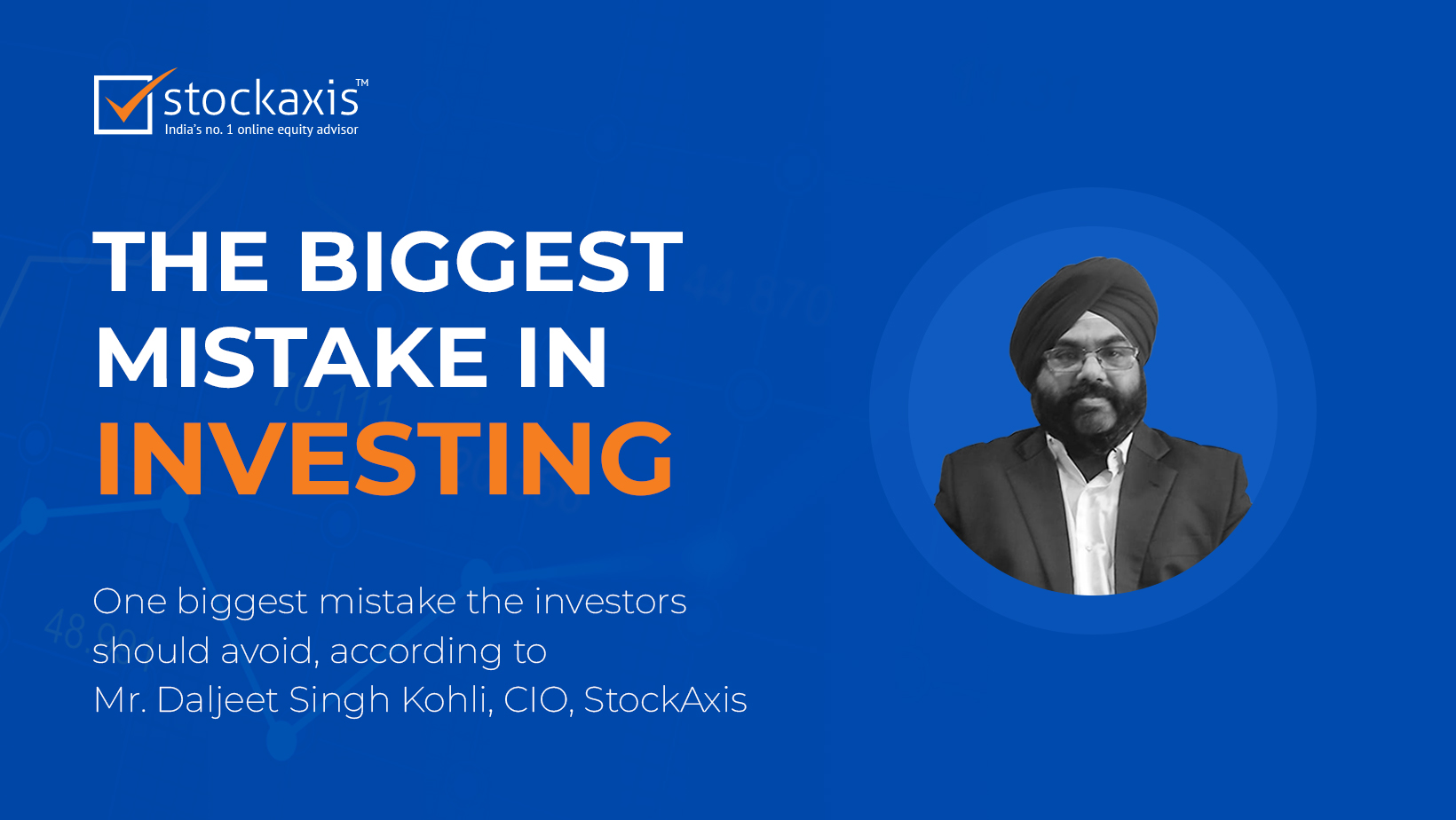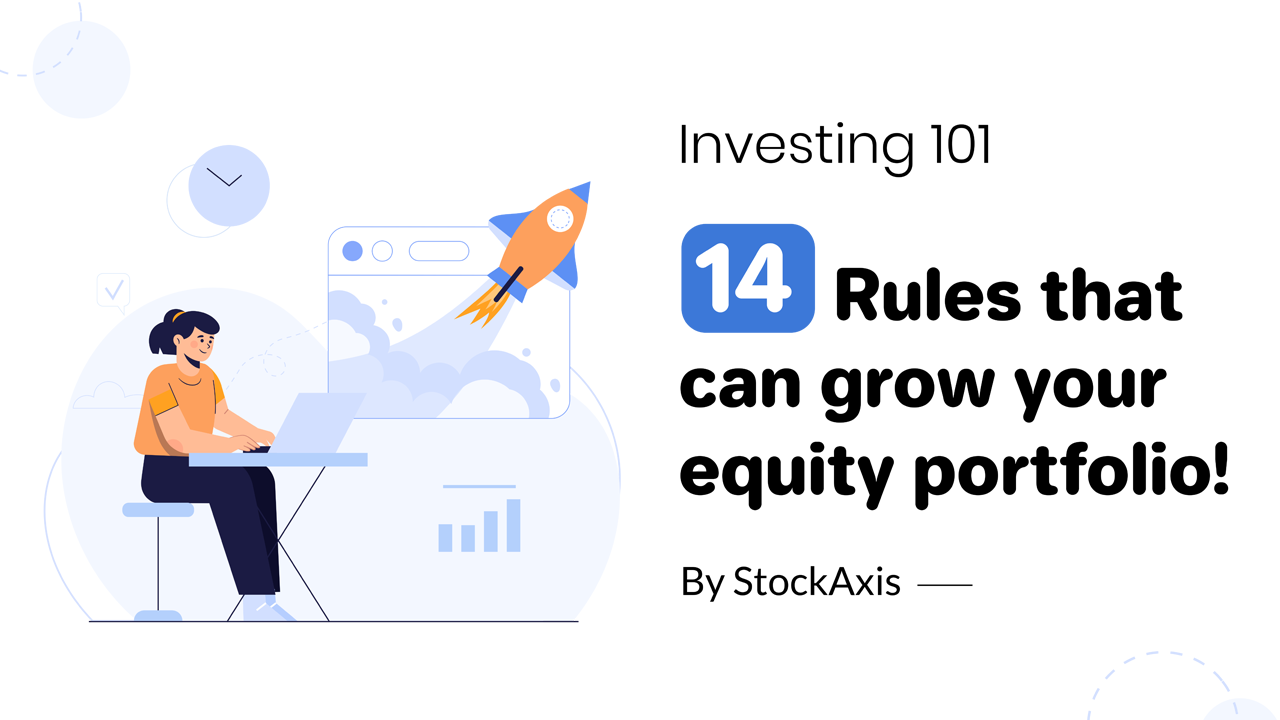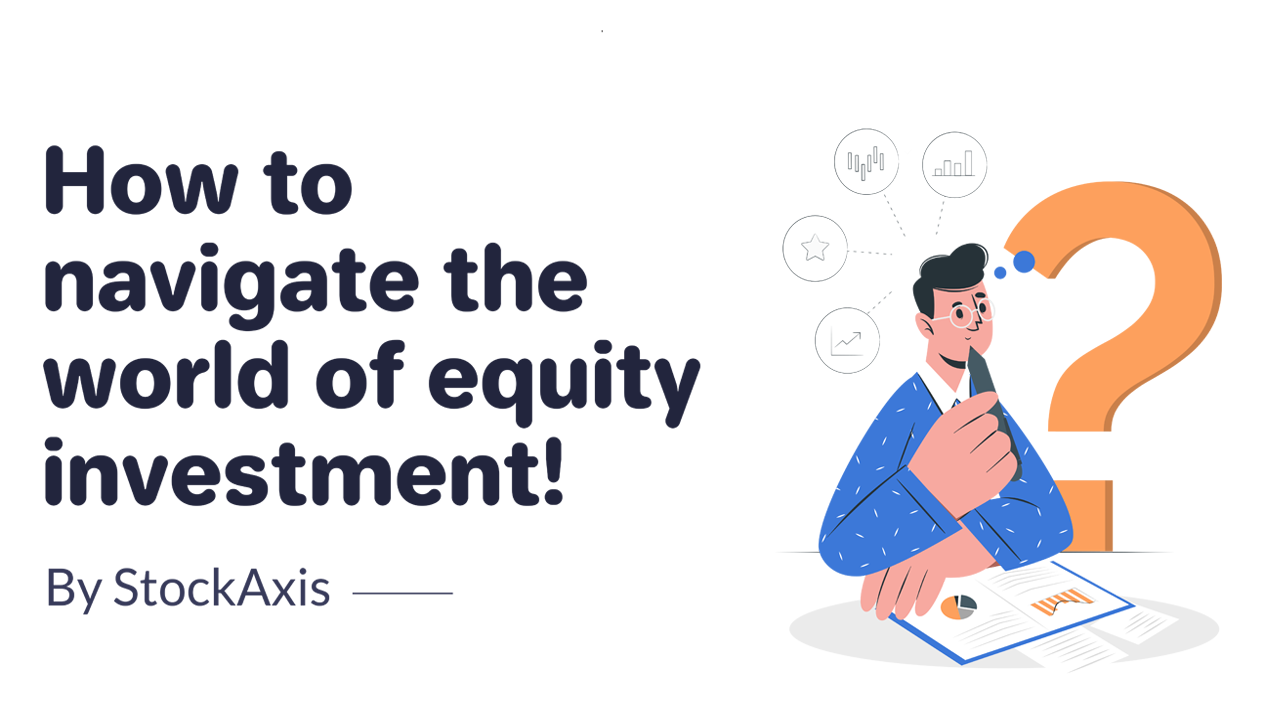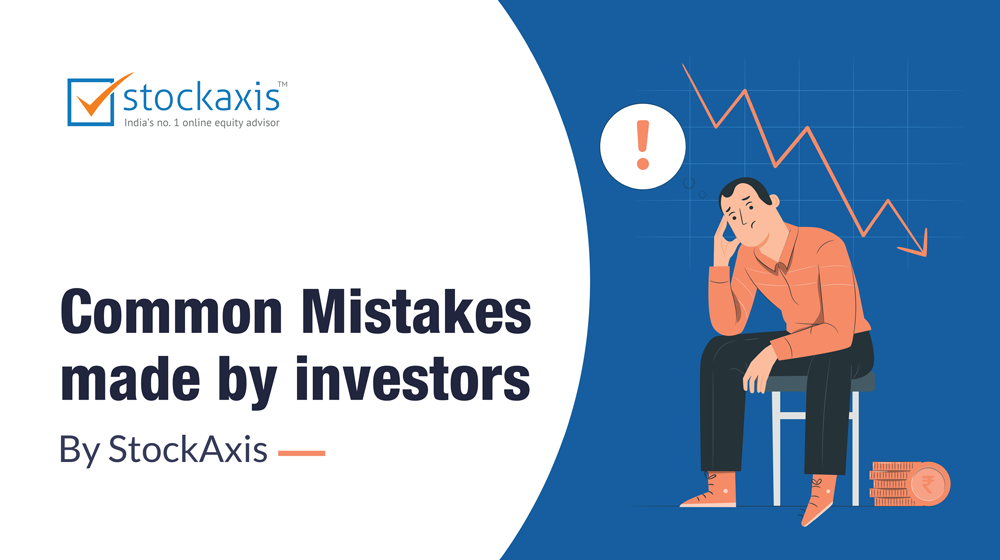Basics
Buckle up and keep reading to learn all the basics you'll need to invest with confidence.
What is a Stock?
In essence, a stock represents an actual share in the ownership of a company. These are stakes in the living, breathing businesses that you encounter in everyday life. To raise capital, companies issue stocks for sale to the general public, which are then traded on stock exchanges such as NSE and BSE as their value fluctuates.
In the short term, share prices change based on the varying opinions of the masses. However, in the long term, a company’s true value is reflected in its share price.
Stock prices move based on demand, supply, and market sentiments, which can lead to daily volatility. This volatility is often influenced by the news and what the world thinks about certain stocks on any given day. Over the long term, though, a company’s intrinsic value is revealed in its stock price, making time the critical ingredient for successful investing.
As a part-owner of a company, you also enjoy additional rights, such as voting rights, bonus issues, and rights issues. You may also receive dividends periodically. However, the growth investment philosophy focuses on capital appreciation over the long term.
Stock Quotes
There are over 5,000 stocks listed on the exchange, and each needs to be identified uniquely. This is where stock quotes come into play.
You've likely seen a ticker on a business news channel or on the large billboard outside the Bombay Stock Exchange, constantly displaying a series of letters and numbers in green or red. These are stock quotes. The letters represent a stock symbol, while the numbers indicate the stock price.
A stock symbol is a unique code assigned to all companies listed on the exchange. Knowing the stock code or symbol of a company allows you to easily obtain information about it. This is crucial for investors who wish to conduct a financial analysis before purchasing a company’s shares. For example, TCS stands for Tata Consultancy Services, while INFY stands for Infosys. Writing the full name of a company would take up too much space on ticker boards or stock tables, so the stock symbol, usually consisting of 3-4 letters, is used instead.
For this reason, stock symbols are also referred to as ticker symbols.
Initial Public Offerings (IPOs)
You may have heard people in the news talking about making their companies "public" or "going public." But what does this mean?
An Initial Public Offering, known as an IPO, is when a company sells its stock to the general public for the very first time. This marks the day the company gets “listed” on a stock exchange, known as the primary market, and the investors who participate in this are often referred to as stags. Once listed, the company is no longer owned solely by its founders; it now belongs to the public who trade its stocks on the stock exchange daily, which is known as the secondary market.
Who Decides the Stock Prices in an IPO?
The company hires an underwriter whose job is to ensure that all initial shares are sold. The underwriter can either set a price by analyzing the company (“fixed pricing”) or gauge demand by consulting with major investors (“book building”). Once the shares are on the open market, their value is determined by market sentiment, reflecting how investors feel about the company.
Why Do Companies Go Public?
Why don't companies just take out loans from banks? The answer is straightforward: the money raised from an IPO does not need to be repaid. The company can use this newly raised capital to expand operations, purchase new equipment, or acquire other companies.
Original shareholders also benefit from spreading the risk. After going public, the owners can cash in some profits while retaining a percentage of the company.
Stock Exchanges
In the Indian equity market, two stock exchanges stand out and are widely used by investors across the nation: the Bombay Stock Exchange (BSE) and the National Stock Exchange (NSE).
A stock exchange functions like a supermarket for shares, acting as an intermediary between buyers and sellers. Any share you want to buy or sell will be listed on an exchange.
When you place an order online, the system quickly matches your trade with the appropriate seller.
Exchanges pair buyers and sellers. Shares for sale have an asking price called the "ask price," which is the amount the seller wants in exchange for their shares. Buyers offer a "bid price," which is the amount they are willing to pay.
The exchange also safeguards investors' interests, ensuring that all parties involved in a transaction fulfill their obligations. For providing this service, the exchange charges a commission on all transactions conducted through its platform.
NIFTY & the SENSEX
Even if you're not familiar with stock markets, you've likely heard of the Sensex and Nifty. In India, these are the two most important stock indexes that measure the strength of the stock market.
One key difference between Sensex and Nifty is the number of stocks each index comprises. The Nifty 50 includes the top 50 of nearly 2000 companies actively traded on the NSE. In contrast, the Sensex consists of the top 30 companies trading on the BSE.
Professional investors often talk about “beating the market.” In this context, the "market" refers to these indices. Beating the market is considered the holy grail of stock investing because it means your investments have performed better than these indices, which are the benchmarks of the stock markets.
Company Size
Company size can be understood by looking at its market capitalization. So, what is Market Capitalization?
Market capitalization, often referred to as market cap, is a common term used frequently in the stock market to classify companies as large-cap, mid-cap, or small-cap. It is essentially the total value of a company’s outstanding shares of stock and is often seen as an indicator of a company’s valuation. Investors use market capitalization to rank companies and compare them with their peers in the market segment.
Market Capitalization Implications in the Stock Market:
- Index Impact: The market cap affects indices like NIFTY50. For example, if HDFC Bank's market cap increases significantly, its weight in the index will also increase.
- Comparison Tool: Market cap helps in comparing companies within the same segment. For instance, TCS has a larger market cap than Infosys, suggesting that TCS is a bigger company.
- Portfolio Balancing: Investors often balance their portfolios with a mix of large-cap, mid-cap, and small-cap companies. Market capitalization forms the basis for these categories.
- Risk Indicator: While it does not provide a complete picture of risk, a larger market cap often indicates that investors believe the company is less risky compared to its peers and that it may provide good returns in the future.
- Global Applicability: The market capitalization method is used in stock markets worldwide, facilitating investors in evaluating companies in both familiar and unfamiliar markets.
Penny Stocks
One of the most frequent questions asked by new investors is about penny stocks. Penny stocks are shares of companies with a smaller market capitalization, and each share typically trades below ₹10.
Many investors believe that penny stocks are a good bargain because the downside seems limited. They often think, “It couldn’t go lower than that.” However, trust us—it can, and very often it will. Here’s why penny stocks are generally a bad idea:
- Compliance Issues: Companies that are penny stocks often fail to comply with the standards or meet the minimum requirements of the stock exchanges. This is not the type of company you should be investing in.
- Lack of Coverage: These companies are usually not covered by professional analysts, meaning there is very little historical or current information available.
- High Volatility: These companies are incredibly volatile. While the potential for massive short-term growth can attract novice investors, it’s important to remember that it works both ways—penny stocks can quickly become worthless.
Penny stocks are highly susceptible to price manipulation and speculative activities. Trading volumes can surge and then vanish rapidly. Often, companies with stocks trading at penny valuations are merely shell companies, meaning there is no viable business left, or all the company’s assets may have been stripped out. This was evident in cases like Kingfisher, Deccan Chronicle, and Gitanjali Gems.
Investing in penny stocks carries a high risk of significant loss, and it's generally advisable to avoid them.
Dividends
Dividends are payments a company makes to share profits with its stockholders, distributed on a regular basis. They are one of the ways investors earn returns from investing in a stock. Analysts often talk about companies that are “good to their shareholders,” referring to those that pay dividends. After fulfilling obligations to creditors, a company can use part or all of its residual profits to reward its shareholders as dividends.
However, not all stocks pay dividends. When a company is regularly profitable and has paid off its debt, it has four choices for what to do with the money:
- Reinvest in the Company: Expand through new markets or products.
- Build Reserves: Hold onto the cash to strengthen financial stability.
- Pay Dividends: Distribute a portion of profits to shareholders.
- Buyback Shares: Repurchase its own stock from the market.
When a company chooses not to reinvest, it essentially signals that substantial growth may no longer be possible, so it pays a regular dividend to keep shareholders satisfied.
Our Perspective
We believe that while dividends can be attractive, they shouldn't be your primary focus. Instead, look for companies with significant growth potential. These companies reinvest their profits to expand their business, which can lead to higher stock prices and greater returns on your investment.
For a balanced approach, consider companies that engage in stock buybacks. When a company buys back its own stock, it not only increases the share price but also demonstrates a strong confidence in the business from those who know it best.
Stock Splits
A stock split, or stock divide, increases the number of shares in a public company by splitting the face value of the shares. For instance, in a 1:2 split, shares with a face value of ₹10 might be split into shares with a face value of ₹5 each. In such a scenario, you would have twice the initial number of shares.
While the number of shares you hold increases, the price per share decreases proportionally, so the total value of your holdings remains unchanged. This means more shares are available for trading.
Reasons for Stock Splits
- Affordability: A company may announce a stock split to reduce the price of its shares, making them more affordable for investors.
- Liquidity: By increasing the number of shares, a stock split can enhance the liquidity of the shares, potentially boosting demand and driving up the stock price in the short term.
Reverse Stock Splits
A reverse stock split is the opposite of a stock split. Smaller companies sometimes implement reverse stock splits to appear more expensive and, in turn, more reputable. For example, a stock valued at ₹10 per share could undergo a reverse 5-for-1 split, resulting in a ₹50 stock with 1/5 the original number of shares on the market.
Stock splits and reverse stock splits are strategic moves companies use to manage share prices and market perceptions.
Order Types
Different order types can lead to vastly different outcomes, so it’s crucial to understand the distinctions among them. Think of each order type as a specific tool, suited to a particular purpose. Whether you’re buying or selling, identifying your primary goal—whether it’s having your order filled quickly at the prevailing market price or controlling the price of your trade—will help you determine which order type is most appropriate.
There are three main types of orders you should know about before getting involved in the stock market. To keep things simple, you can stick to placing market orders.
Market Orders
A market order is an order to buy or sell a stock at the market’s current best available price. It typically ensures execution but does not guarantee a specified price. Market orders are optimal when the primary goal is to execute the trade immediately. A market order is generally appropriate when you think a stock is priced right or when you want immediate execution.
Market orders should generally be placed only during market hours. A market order placed when markets are closed would be executed at the next market open, which could be significantly higher or lower than its prior close.
Limit Orders
A limit order is an order to buy or sell a stock with a restriction on the maximum price to be paid or the minimum price to be received, known as the “limit price.” If the order is filled, it will only be at the specified limit price or better. However, there is no assurance of execution. A limit order may be appropriate when you think you can buy at a price lower than or sell at a price higher than the current quote.
Stop Orders
A stop order is an order to buy or sell a stock at the market price once the stock has traded at or through a specified price, known as the “stop price.” If the stock reaches the stop price, the order becomes a market order and is filled at the next available market price. If the stock fails to reach the stop price, the order is not executed.
A stop order may be appropriate in these scenarios:
- When a stock you own has risen, and you want to protect your gain should it begin to fall.
- When you want to buy a stock as it breaks out above a certain level, believing that it will continue to rise.
- A sell stop order is sometimes referred to as a “stop-loss” order because it can help protect an unrealized gain or seek to minimize a loss.
Understanding these order types will help you make more informed decisions and better achieve your investment goals.
Margins
Once you’ve established a relationship with your broker, they might offer you the option to buy stocks on margin. A standard cash account only allows you to buy as much stock as you have cash available. With margin, however, you purchase stocks with borrowed money. Cue the red flags and warning sirens!
While margins can potentially increase your returns, they also significantly amplify your risk. The primary danger of buying on margin is the uncertainty surrounding the performance of the stock you purchased or short-sold. Even the best stock pickers in the world are wrong about a third of the time, which introduces considerable risk when using margin.
Don’t be swayed if you’re told that margin accounts increase your "buying power." Buying on margin only enhances your "borrowing power." You’ll have to repay all that borrowed money eventually. If the stocks you bought on margin have decreased in value when repayment is due, you may find yourself unable to cover the debt.
Ultimately, the biggest beneficiary of a margin account is your broker, not you. For them, margin is a cash cow; for you, it’s a double-edged sword.
Short Selling
Just as you can invest in a company and profit when its value rises, you can bet against a company and make money when its value declines, a practice known as short selling.
Gains from short selling are realized when the price of the stock falls and the seller buys back the stock at a lower price. Let’s illustrate with an example. Suppose you’ve been researching Company ABC and are convinced its value will soon drop. While many investors might avoid the stock, a short-seller would take action.
For instance, if Company ABC shares are currently worth ₹100 each, the short-seller might borrow 20 shares from a lender or broker and sell them. 20 shares x ₹100 = ₹2,000. If ABC’s shares then fall to ₹80, the short-seller buys back the 20 shares for ₹1,600, making a profit.
How much profit? With each share declining ₹20, the short-seller makes ₹20 x 20 shares = ₹400. In India, short selling in the cash market must be settled on an intra-day basis. In the futures and options market, it can be held longer. Short-sellers are often risk-seeking speculators or investors looking to hedge losses from long positions in their portfolios.
However, if the stock price increases contrary to the seller’s expectation, this strategy can result in unlimited losses since there's no absolute limit to how high a stock price can go.
Short selling is therefore a very risky strategy and should not be considered a buy-and-hold approach. It requires a short-term horizon and active management, with the seller prepared to exit the trade if it starts going south.










